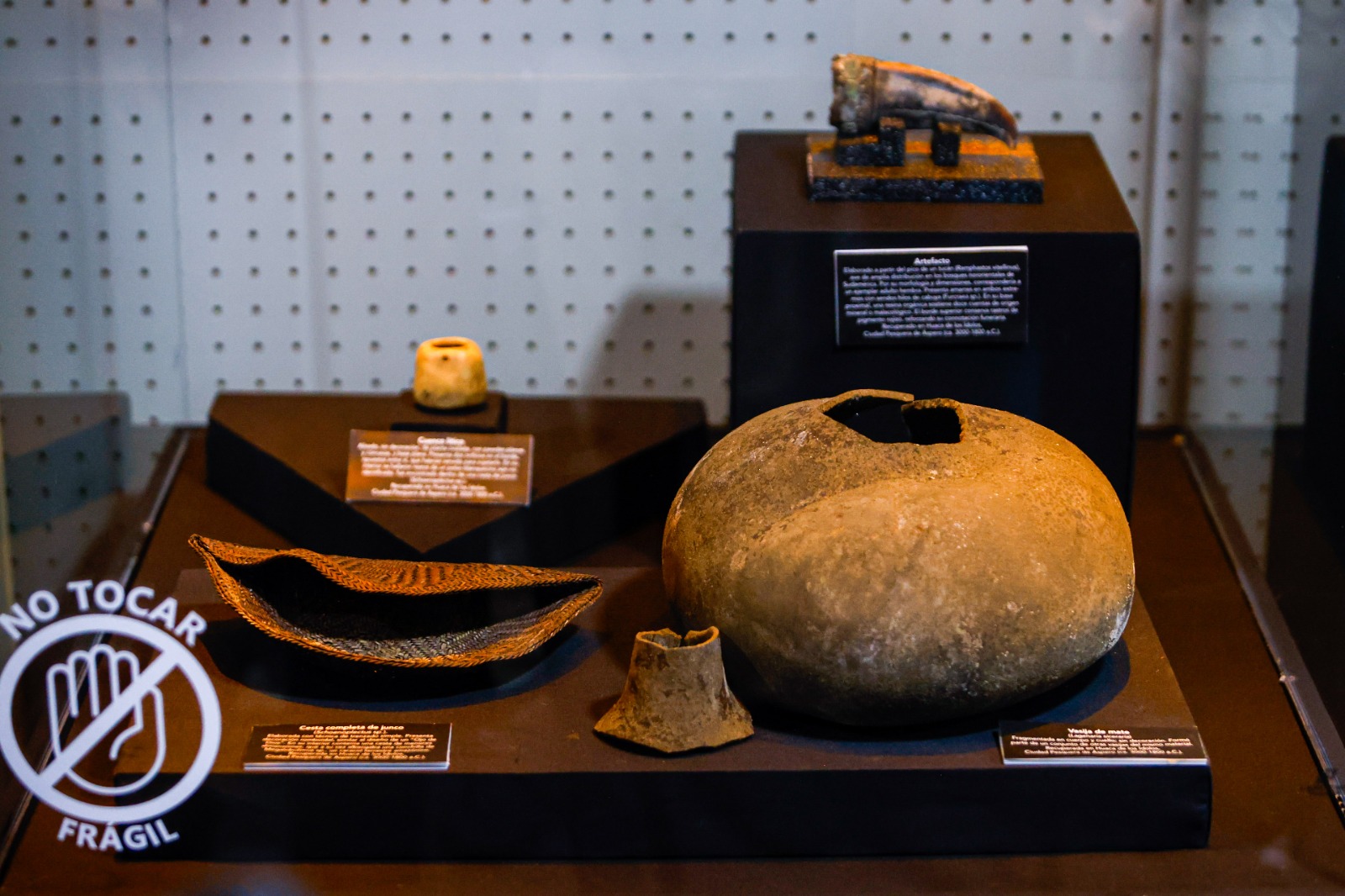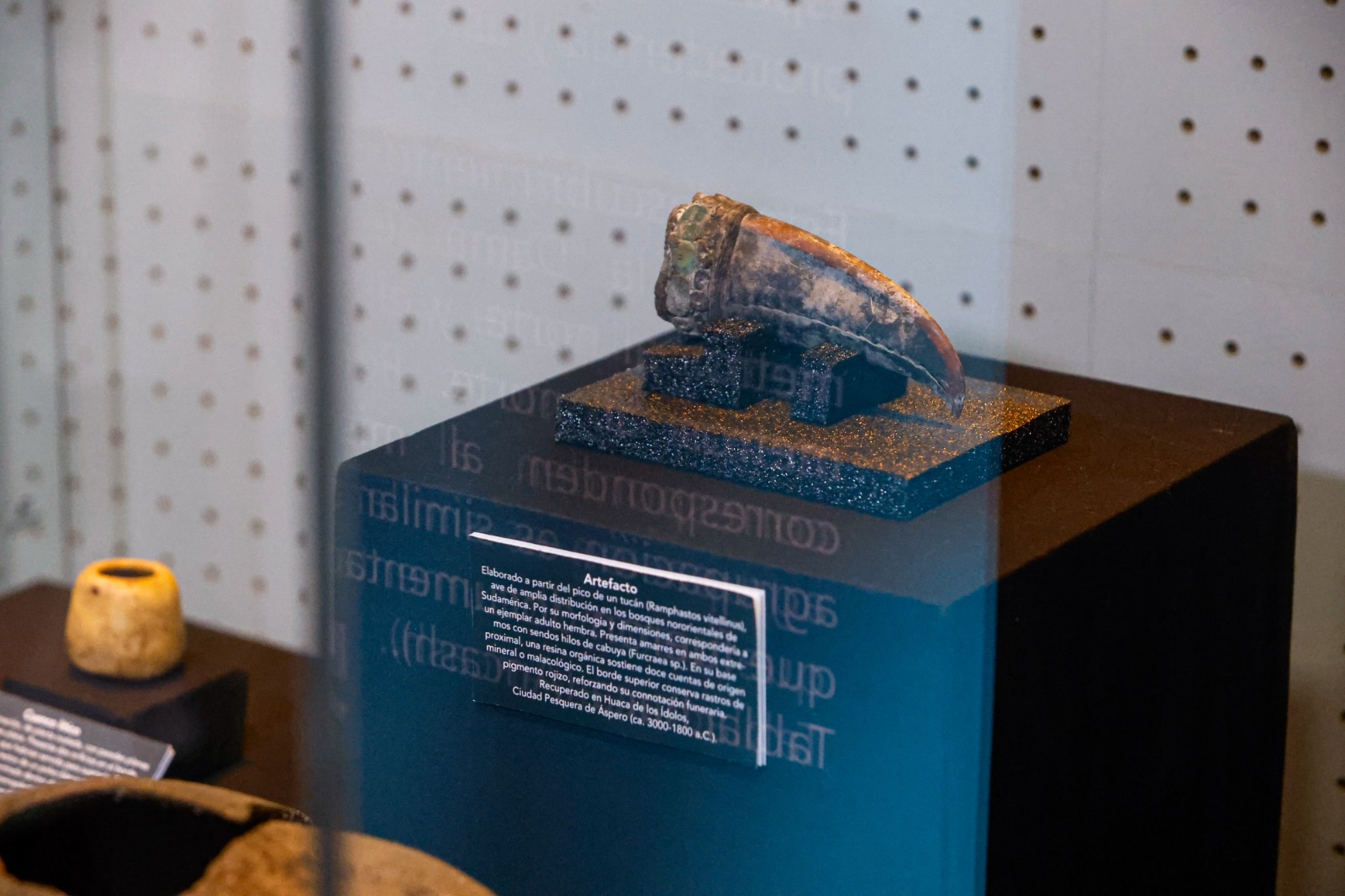The remarkable remains of an elite woman have been unearthed in an ancient fishing town in Peru’s Lima region. The woman’s skin, hair, and nails have all been preserved, making this an incredibly rare find in the Peruvian archaeological record.
The burial was discovered at the archaeological site of Áspero, which was used by the Caral civilization – a little-known society dating to 3000 to 1800 BCE that some experts think is the earliest civilization in the Americas – in millennia past. The woman at its center is thought to have been aged between 20 and 35 at the time of her death, and was found in a public building, her body carefully wrapped in an elaborate mesh of materials.
Her shroud included cotton fabrics, rush mats, and a panel embroidered with macaw feathers – one of the oldest examples of feather art in the Andes – all delicately arranged in a net over bundles of plant fibers. She was also dressed in an intricate piece of headwear made of fibers with bundles of twisted threads, as detailed in a statement from the Peruvian government.

Some of the unusual grave goods found at the site.
Image credit: Peru Ministry of Culture
As well as impressive embroidery – a testament to the technological advancements of the Caral civilization – the team found an extravagant haul of grave goods adorning the woman’s resting place. Reed baskets, a finely decorated needle, an Amazonian snail shell, a toucan’s beak inlaid with green and brown beads, wool textiles, a fishing net, weaving tools, and, bizarrely, around 30 sweet potatoes, were among the finds scattered in the lower part of the burial chamber.
Because of these offerings, and the painstaking funerary practices evident in the preparation of the body, it’s fair to assume that the woman was a figure of high social rank, which is indicative of the prominent role women are believed to have played in this ancient Andean society.
We don’t currently know exactly how old the remains are – but based on what is known about the Caral’s occupation of Áspero, they are likely at least 4,500 years old. A multidisciplinary team is working hard to narrow this down and to uncover information on the individual’s health, diet, and cause of death, as well as to pinpoint the origin and use of the grave goods.

A toucan’s beak was among the grave goods.
Image credit: Peru Ministry of Culture
This woman is far from the first elite Caral burial discovered at Áspero. In 2016 and 2019, two other high-status individuals were found just 3 meters (9.84 feet) and 1.25 meters (4.1 feet), respectively, from this most recent find.
For years, the site was used as a municipal dumping ground, but has since yielded 22 architectural complexes, which attest to the sophistication of the Caral civilization.
Source Link: 4,500-Year-Old Peruvian Woman Preserved In Exceptional Condition – Including Hair, Skin, And Nails